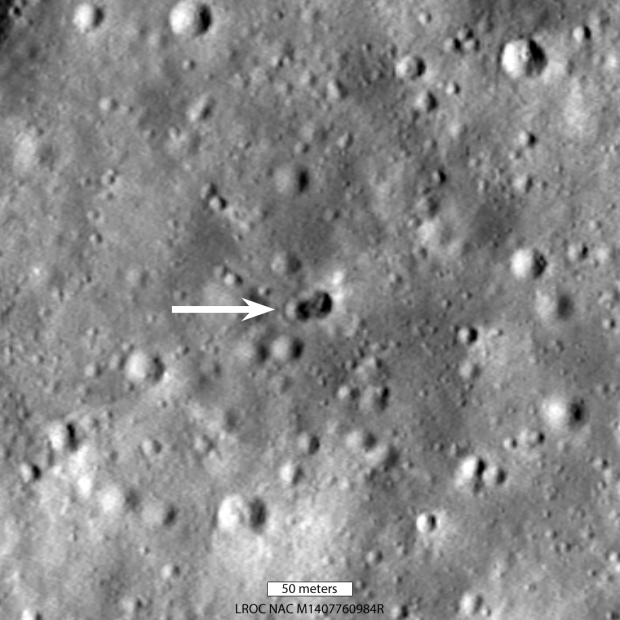By Samantha Jones-
NASA has shared images of an unidentified spacecraft that crashed into the Moon. NASA’s Lunar Reconnaissance Orbiter spotted the spacecraft and started tracking it through space back in 2015. The rocket crashed onto the moon on 4 March and was travelling at over five kilometres per second.
The space agency published a post about the unidentified spacecraft on 24 June alongside photos of the crash site.
NASA wrote : “Surprisingly the crater is actually two craters, an eastern crater (18-metre diameter, about 19.5 yards) superimposed on a western crater (16-metre diameter, about 17.5 yards).
“The double crater was unexpected and may indicate that the body had large masses at each end.
“Typically a spent rocket has mass concentrated at the motor end; the rest of the rocket stage mainly consists of an empty fuel tank.”
The images sent conspiracy theorists wild on social media, with some labelling them as proof of alien activity.
However, there’s a far simpler explanation – the divet was left by an out-of-control rocket.
Astronomers discovered the rogue rocket part late last year as it hurtled toward a lunar collision.
They believe that the schoolbus-sized hunk of metal hit the rocky satellite’s surface in the early hours of March 4.
The origins of the rocket part remain a mystery. It was first thought to belong to SpaceX but was later pinned on China’s space agency.
Nasa says images of the crash site – which produced a rare double impact crater – could help astronomers identify who’s responsible.
“The double crater was unexpected and may indicate that the rocket body had large masses at each end,” Nasa wrote on June 24.
“Typically a spent rocket has mass concentrated at the motor end; the rest of the rocket stage mainly consists of an empty fuel tank.
American space agency NASA has shared a post on its Instagram handle, describing a rare celestial event that took place about a decade ago. The event – transit of Venus across the face of Sun – was captured by the agency’s Solar Dynamics Observatory (SDO).
“She was one of the rare ones, so effortlessly herself, and the world loved her for it,” NASA said in the post, which carries the photo of the Sun and a dot-like Venus. It then described why solar transits are important events for astronomers.
“Transits help astronomers study the atmospheric composition and orbit of planets,” said NASA.
Interestingly, it added that the next transit will happen in again after almost 100 years. “Venus’ solar transits happen in pairs just over 100 years apart: the last pair of transits occurred in 2004 and 2012, and the next will not happen until 2117,” said NASA.
“The solar transit in 2012 lasted nearly 7 hours and was visible worldwide, with observers on all seven continents able to view the event,” it added.
The space agency posted the information about 10 hours ago and since then, it has received close to four lakh likes. Many users are amazed to see the close-up of the Sun in the photo and posted comments like “Wow”, “Awesome” and “Beautiful”.
Image: NASA/Goddard/Arizona State University

